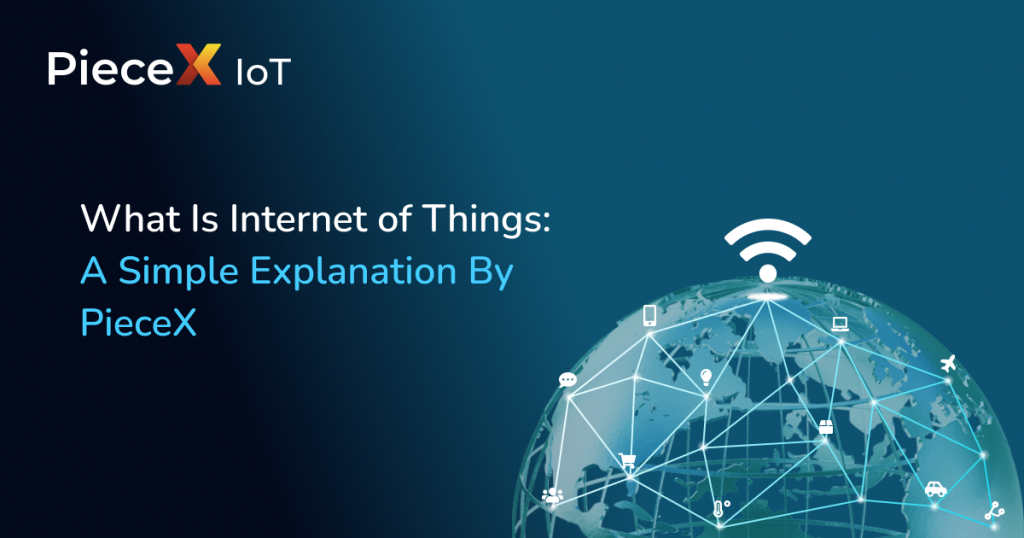
Fundamentally, as the age of information has gotten more and more advanced, automation, software, and Artificial Intelligence have become majorly relied on by the people of the world.
We are already fully reliant on technology in our daily lives and we are moving at a very rapid pace towards turning that reliance to becoming a fundamental part of our existence in even the simplest things.
The question is: how far can this go? We’ve gotten to a point where our tech has become so advanced to the point that we have devised very tiny computers and chips that can be connected to, well, things.
This is called the Internet of Things. Let’s find out what that is in more complex terms.
What is IoT (Internet of Things)?
In simple terms, IoT (Internet of Things) is the idea of connecting physical objects that we constantly use to the internet and to other devices, giving it the ability to send and receive data, understand commands, and process software.
From basic household items such as fridges and microwaves to smartwatches and fitness bands, almost everything that has an on/off switch is now capable of being connected to the internet.
The most popular thing that falls within the concept of IoT (Internet of Things) is the self-driving car, among almost 10 billion different devices. Those devices are all currently connected to networks and other devices, sharing data between one another and earning the name “smart” devices as they are utilized by machine learning.
So this is all relevant to the concept of “Internet of Things” but how exactly does it work?
How Does IoT (Internet of Things) Work?
Due to the discovery and manufacture of low-cost computing, systems that manage big data, and sensor technologies, it has become imminent that those technologies would be used and utilized to create systems farther from the ones we see in our smartphones and computers.
Furthermore, let’s discuss the main and major technologies that led to us being able to make IoT (Internet of Things) possible, connecting different kinds of physical objects to a multitude of networks.
Artificial Intelligence
AI, and the capabilities that come with it, made it very possible to make our day-to-day machines smart enough to understand specific commands based on thorough learning processes.
Machine Learning
Gathering and understanding data quickly has become very possible with our day and age machine learning technologies, making it very possible to feed massive amounts of data to various machines.
Chips & Sensors
Access to small-sized sensors and chips made it very possible to manufacture and code software into chips and sensors that help with the creation of IoT technology.
Use Cases of Internet of Things
Internet of Things is used in many different industries and for many different purposes, it strongly impacts businesses, security organizations, militaries, and even daily lives of average residents and civilians of the world.
Let’s go through some of that.
IoT & Business
Most successful businesses have lately gotten to include IoT (Internet of Things) in their works. There are two major methods in businesses.
Automating The Process: This includes using devices that automate the way business is conducted. Whether from the basis of manufacturing, creating the product, the clickability of purchase, and more. Automating the way things are done makes businesses prosper as it will cut down labor costs and man-power by a massive degree.
Connecting The Product: Applying Software onto the product itself in order to make it a “smart” product helps boost business in many ways. In one case, it would allow the owners of the business to get reports from the products itself in regards to the errors, problems, and faults it may have, as well as allow the business to fix it by uploading updates into the cloud. On the other hand, the traversing of data can give companies heads up on what components need replacement in the future as corporations and enterprises will have access to big data supplied to them through their very own products.
IoT & Security
In the security sect, IoT (Internet of Things) has become immensely popular. The more advanced security systems (including locks and keys) have all become digitized and reliant on software components.
Hence, we find that in most modern houses, banks, etc.. basic equipment, tools, and systems, are all smart. Starting from cameras that have facial recognition software to locks that only unlock by face scans, etc..
IoT & Manufacturing
Industrial use of IoT (Internet of Things) is prominent to manufacturing as most machines are now built to automate the work they do. Instead of having a person doing every basic action in a factory, machines now take care of it all.
PieceX IoT
Now that we have a strong idea what IoT (Internet of things) is, here is how PieceX can help you access a variety of IoT software as well as the hardware applicable to it.
(Internet of Things) is a new solution that allows providing software solutions for specific hardware, this allows hardware sellers to market for their hardware and software developers to provide solutions for specific hardware to further increase efficiency and automation cycles.
For Enterprise, this gives you the accessibility to a better supply chain and for tech companies, PieceX IoT allows users to advertise their hardware as well as sell the software connected to it.
Conclusion
Expected to reach up to 22 billion devices by 2025, IoT (Internet of Things) is now one of the most sought after concepts in advancement of technology and everyone is venturing towards automating everything and making as many devices as possible into smart devices taking us towards a future where labor is minimized and tech takes all.
